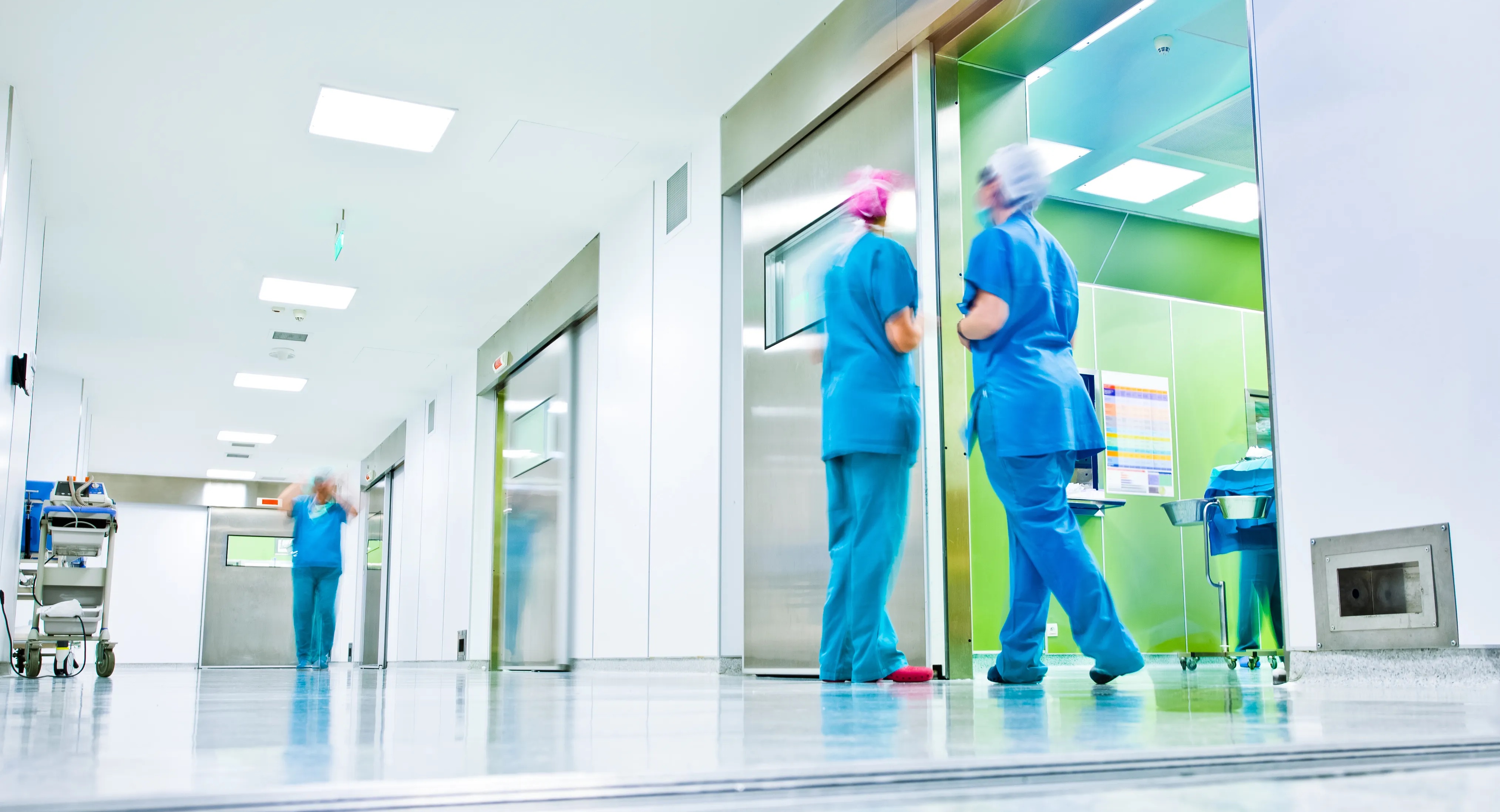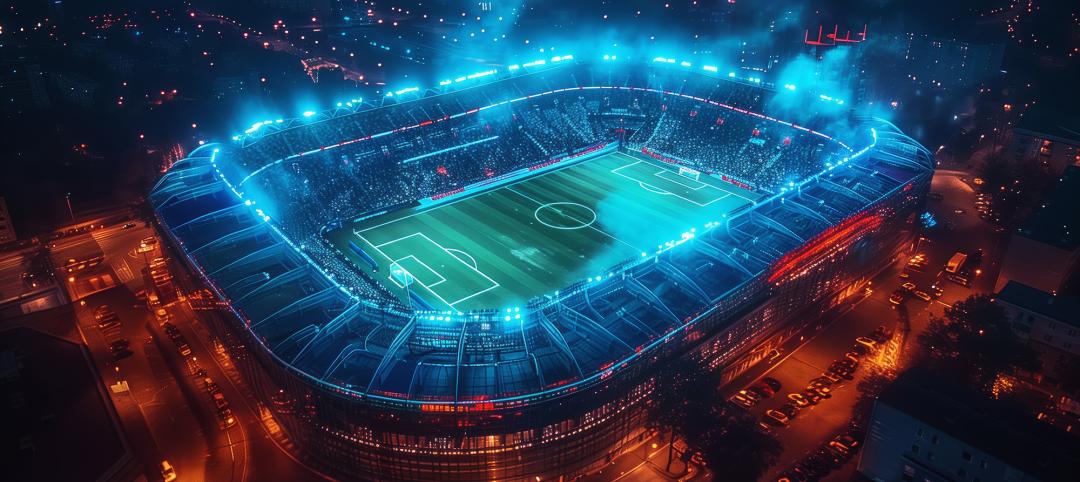Imagine lights being used for more than simply illumination—used to track orders in a warehouse, send coupon codes to passersby, or automatically change to match a guest’s favorite color when they enter a room.
With the evolution of lighting controls, these concepts are becoming realities.
Smart lighting is emerging at the forefront of facility technology. Learning what intelligent lighting is and how it can be implemented is the first step toward ensuring your facilities and projects are laying the infrastructure today that will be needed to the support the technology of tomorrow.
What is intelligent lighting?
Intelligent lighting systems feature sensors (capable of sensing movement, daylight, temperature, location trackers, etc.) and low voltage controls which can either be built into light fixtures or mounted externally. Low voltage controls allow for the system to have future flexibility and adaptability.
How can intelligent lighting be used? Here are four ways:
Real Time Tracking
One of the primary uses and benefits of intelligent lighting is the ability to identify and track the location of assets and/or persons of interest in real or near-real time. This is accomplished through real-time locating systems (RTLS).
A real-time locating system consists of fixed location sensors which receive wireless signals from small tags affixed to equipment, guests’ wrist bands, or other entities that facility managers wish to track. Each tag periodically transmits its own unique ID which the sensors track. System range and capabilities depend on the robustness of the RTLS system.
Ways RTLS technology can be used in a facility include:
- Equipment Tracking: Equipment can be tracked by affixing a tracking tag to a piece of equipment. If staff needs a particular piece of equipment, they can log into the RTLS system at a workstation or with their mobile device and easily identify what equipment is located closest to them. RTLS can also be used to keep track of expensive or shared equipment to reduce theft and accidental loss.
- Shipment Tracking: In warehouses, retail stores, or other facilities, RTLS tags can be attached to shipments, orders, merchandise, and the like. These tags can then be used to track individual items at the click of a button and efficiently respond to customer requests.
- Customizing Customer or Patient Experience: Wrist bands with RTLS tags can be provided to each guest or patient, loaded with their individual information and preferences. Facilities could then customize their customer or patient experience, change the color of lights to suit their preferences, provide personalized digital greetings, monitor wait times, and more. Staff members could also be provided wrist bands that would allow managers to monitor how often a nurse has visited a patient’s room or a guest room has been cleaned, providing a data-driven enhancement of patient care or guest services.
- Patient Safety: Particularly for pediatric patients or patients with dementia or Alzheimer’s, RTLS can be used to monitor the physical movement of patients to ensure their safety and security. An RTLS alert can help staff pinpoint a patient or resident’s location who wanders away from a secure area or attempts to leave the building unsupervised.
- Facility Navigation and Wayfinding: For larger facilities and campuses—such as hospitals, theme parks, airports, and more—RTLS can allow guests, patients, and other visitors to receive real-time, location-specific navigation support.
- Location Specific Alerts: Visitors and patients can be provided real-time communication prompted by their location, such as coupon codes when you walk past a store, airport gate changes, specialized hazard warnings, and more.
- Emergency Staff Mobilization: In large facilities or campuses, RTLS can be used to quickly locate healthcare staff during a medical emergency.
In healthcare facilities in particular, studies show the use of RTLS has significantly reduced Emergency Department wait time, length of stay, and “left without being seen” rates.
Energy Savings
Lighting accounts for a significant portion of a building’s energy consumption, and the U.S. Department of Energy estimates lighting to consist of 11% of a building’s total energy use. Meanwhile, the National Institute of Health estimates artificial lighting consumes as much as 20-30% of total electricity in a commercial building.
Intelligent lighting can be an effective tool in reducing this energy consumption.
On a higher level, smart lighting can reduce energy through occupancy and daylight sensors. Occupancy sensors turn on lights in parts of a facility that are in use, while turning off lights when the areas are not utilized. Daylight sensors conserve energy by sensing the presence of daylight in a room, dimming when daylight is adequately lighting a space. A study of daylighting and control systems by the Lawrence Berkeley National Laboratory indicated energy savings ranged from an average of 30% when only using occupancy sensors to an average of 45% when using daylighting sensors. The U.S. Department of Defense likewise indicated a 43-79% energy reduction in cost and carbon footprint was achieved when using advanced lighting control systems.
Wellness
In recent years, there has been a growing awareness of the impact of light on human health.
A person’s “body clock” is regulated by circadian rhythms. These rhythms are physical, mental, and behavioral changes which follow a 24-hour cycle. These rhythms primarily respond to light—following the cycle of the sun. If a person’s body clock is synchronized to natural circadian rhythms, they will typically be able to soundly rest at night and be alert and productive during the day. Studies have shown that full circadian lighting in NICUs can support the healthy growth of infants, while improving employee productivity and mood in office settings.
With this in mind, intelligent lighting is increasingly being used in facilities to mimic circadian rhythms, changing light temperature and brightness to simulate sunrise to sunset.
Future Proofing Facilities
In the future, intelligent lighting will likely become a standard and code for many commercial and healthcare facilities. Many facilities may not be ready to implement the full range of smart lighting’s capabilities. However, planning for and implementing this tech infrastructure early on will provide facilities the flexibility to adopt new technology at a gradual pace and avoid costly retrofits down the road.
This was the case for one of SSR’s healthcare partners, whose story we will explore below.
Case study: Intelligent lighting in a hospital
A few years ago, a leading healthcare provider set out to update their system-wide lighting and controls standards. Through research, site visits, a design competition, and manufacturer interviews, the organization selected a light fixture line and control system which provides flexibility in the present and prepares the health system for the future. The healthcare partner implemented a low voltage networked control system which is easily expandable and easy to maintain. Their facility team was trained on the new control system to ensure a smooth maintenance transition. Additionally, the health system included real-time location sensors in all standard light fixtures to prepare for any future infrastructure RTLS needs. While the RTLS system is not currently activated, installation allows for flexibility in the future as the facilities become more and more connected.
Recently, the healthcare partner embarked on a facility expansion—the largest facility expansion for this system in over a decade. During the Design Development phase, the owner and design team began to collaborate around existing light standards and a recent patient room renovation—which led to a new patient room mockup. The basis of the design incorporated circadian rhythm lighting, an exam override function, and multiple scene selection switching. The team then conducted a post-occupancy review of the recently renovated patient room, while also interviewing staff and families. This feedback led to improvements to the patient room standard, including expanded circadian rhythm lighting, color-changing patient-controlled lighting, more simplistic room lighting controls, and the introduction of a mobile phone lighting control application. By listening to input from the space users, the project will provide unique controls that enhance the way team members, visitors, and patients experience the health system’s facility and care.
You can learn more about intelligent lighting by listening to SSR’s Tech Vitals podcast. Additionally, if you would like to have a conversation about the opportunities for intelligent lighting in your facility or project, contact SSR’s electrical engineering team.
About the Author
Todd Herrmann, PE, LEED AP, is a Principal and Electrical Engineer in SSR's Dallas office. With nearly two decades of experience in the building and construction field, Todd leads electrical design teams, design processes, and coordination. His expertise includes the design of lighting systems, emergency power systems, and power distribution.
Abigail Lipperman, PE, LEED AP, CHFM, CHEPP, SFP, is Manager Engineering Infrastructure with Children’s Health.
More from Author
SSR | Jul 15, 2024
Smart stadiums: The future of sports and entertainment venues
These digitally-enhanced and connected spaces are designed to revolutionize the fan experience, enhance safety, and optimize operational efficiency, according to SSR's Will Maxwell, Smart Building Consultant.
SSR | Jan 31, 2023
How to solve humidity issues in hospitals and healthcare facilities
Humidity control is one of the top mechanical issues healthcare clients face. SSR's Lee Nordholm, PE, LEED AP, offers tips for handling humidity issues in hospitals and healthcare facilities.
SSR | Sep 14, 2020
Energy efficiency considerations for operating buildings amid a pandemic
During these times building owners and operators should remain focused on verifying their building systems are functioning properly and maintenance routines are kept on schedule.
SSR | Oct 2, 2014
Effective use of building enclosure mock-ups within the commissioning process
Engineers from SSR offer advice and guidelines on implementing building enclosure mockups on any project.










